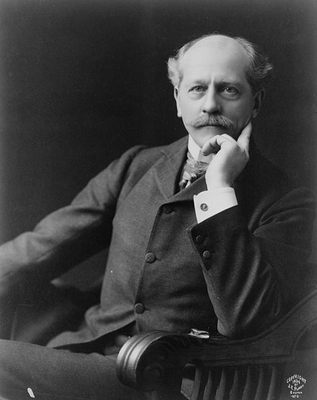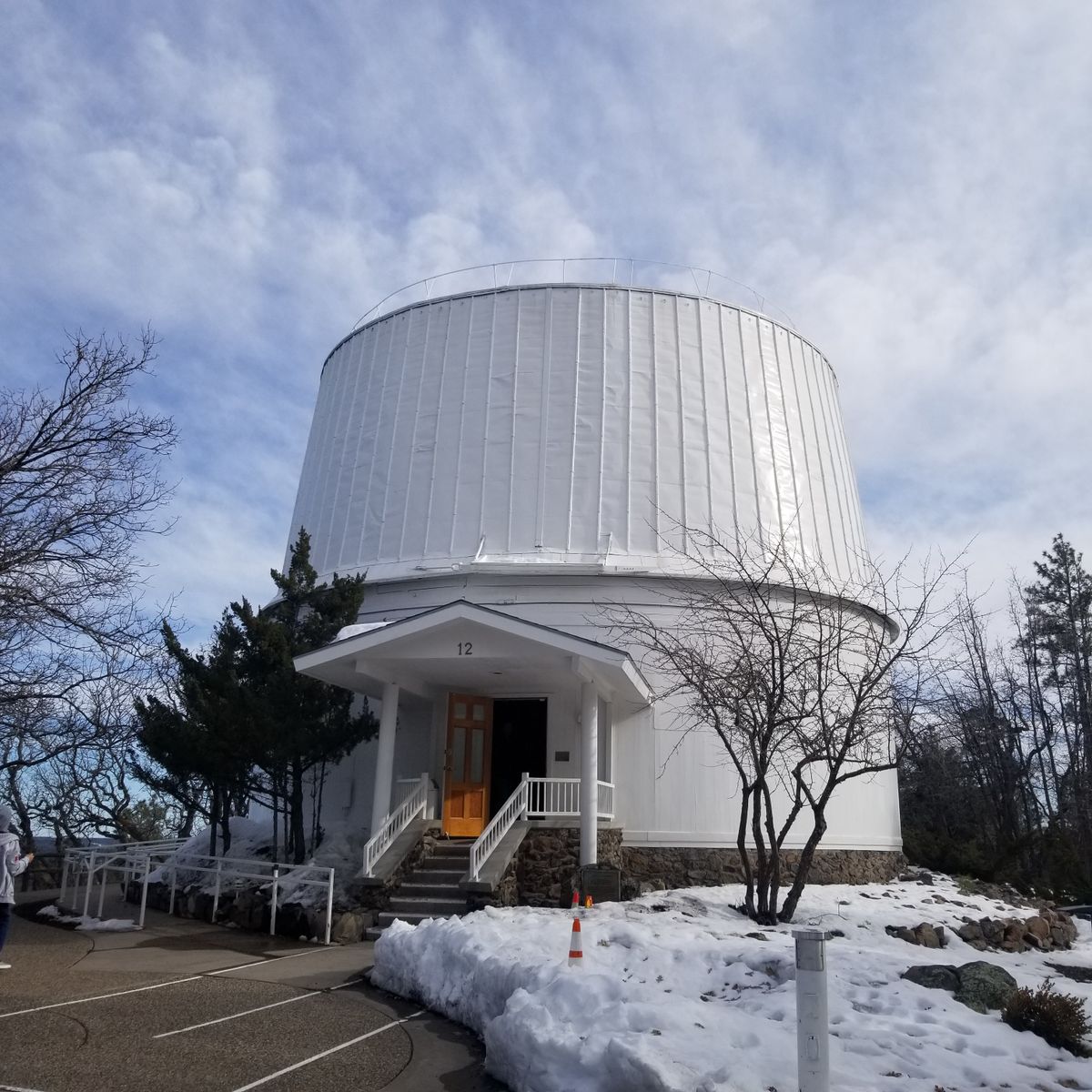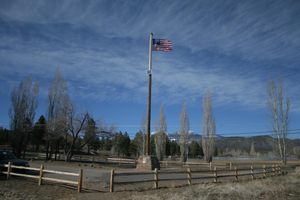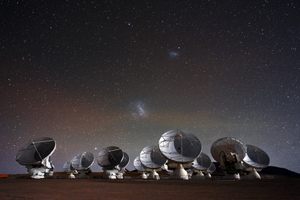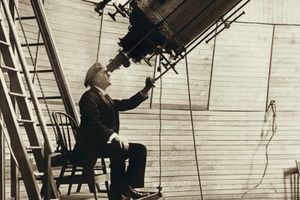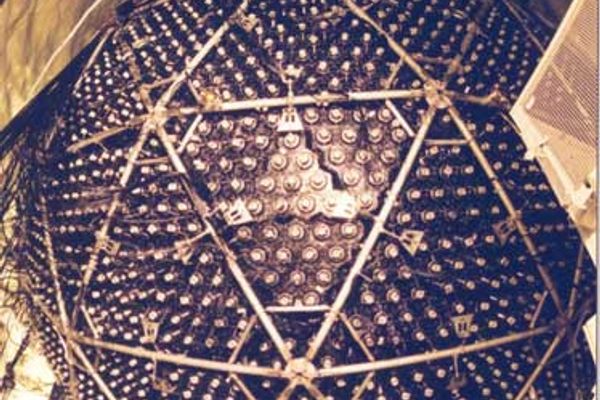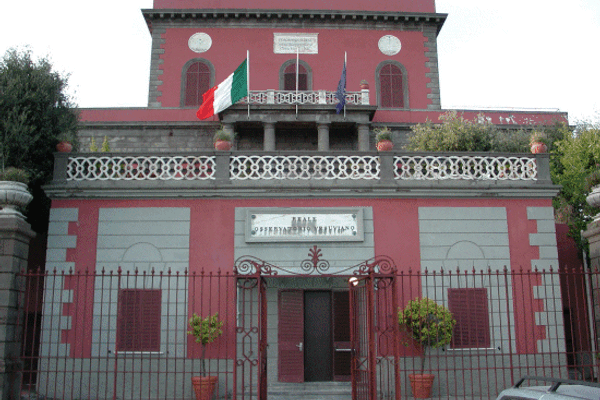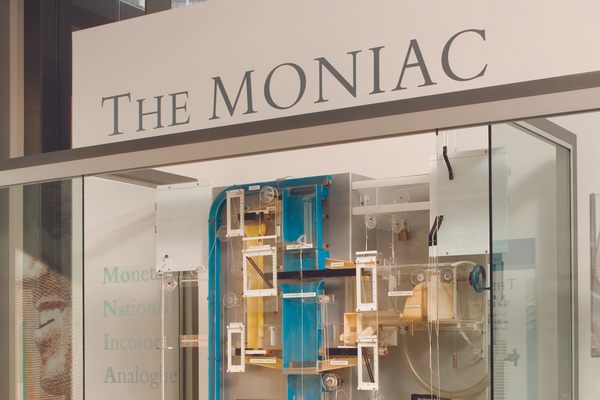About
Percival Lowell, of the well-known Lowell family in Boston, was an early 20th century astronomer who popularized the belief that Mars was home to an advanced, highly technological civilization. Like most wealthy amateur scientists of his era, Lowell had many interests; he was a businessman, author, mathematician, and noted Japanophile who traveled extensively in Asia. In 1894, however, Lowell dedicated most of his efforts to studying astronomy and used his wealth to found an observatory in his name.
Lowell's interest in astronomy and the potential for life on other worlds developed after the release of two influential works: The Planet Mars and Its Conditions of Habitability (1892), by French Spiritualist and science writer Camille Flammarion, and Life on Mars(1893), which documented the Martian observations of Italian astronomer Giovanni Schiaparelli. The latter book featured hand-drawn surface maps of the red planet, detailing a complex system of what Schiaparelli called canali, Italian for "channels." In English, however, the word was mistranslated as "canals," which implied that they had been artificially created. This mistake led some to conclude that Schiaparelli had observed the constructions of an advanced civilization (canals), rather than a natural feature of the landscape (channels). Though today the canali are known to be an optical illusion, Lowell was the strongest proponent of the view that they were artificial in nature. Consequently, he dedicated the next 15 years to studying Mars at his observatory in Flagstaff, Arizona.
The site in Flagstaff was chosen for its high altitude (over 7,000 feet), few cloudy nights, and distance from city lights. These criteria, though now accepted as essential for optimal observing, were pioneered by Lowell. From Arizona, the astronomer presented his findings, along with illustrations of the surface features, in three books: Mars (1895), Mars and Its Canals (1906), and Mars As the Abode of Life (1908). In his publications, Lowell suggested that the canals were evidence of the desperate efforts of a technological society to siphon water from the polar ice caps of their drying planet.
While Lowell's ideas generated much public excitement, the astronomer and his observatory were ostracized by the skeptical scientific community. Unfortunately for Lowell, his observations of Mars were not the only erroneous ones; he also sketched maps of Venus with spoke-like features emanating from a central dark spot. As the Venusian atmosphere is now known to be opaque, it was suggested that the astronomer was in fact observing an image of the blood vessels in his own eye.
Despite the observer's mishaps, Lowell made significant contributions to astronomy and, in recognition of his efforts, craters on the Moon and Mars bear his name. Most notably, he began the search that culminated in Pluto's discovery. To explain apparent discrepancies in the orbits of Uranus and Neptune, Lowell proposed the Planet X hypothesis: an unseen ninth planet was perturbing the outer planets' orbits. Today we know that Pluto's gravitational influence on Uranus and Neptune is negligible, but Lowell was correct in suggesting another body resided beyond Neptune. Though Lowell would not live to see his theory affirmed, his observatory staff would. In 1930, Clyde Tombaugh, using the 13-inch astrograph, discovered the ninth "planet." Appropriately, Pluto's name and symbol were chosen in part due to Percival Lowell's initials, PL.
Today, the 24-inch Alvan Clark telescope, through which Lowell made his observations, is used for educational purposes. The telescope is housed in a dome designed by local bicycle mechanics and handymen, the Sykes brothers. The brothers constructed the "inverted bucket" shaped-dome out of local Ponderosa pine, and set the roof on a track so that it could rotate. Though construction was completed in only ten days, it has remained in good condition since, with the exception of the roof's rotation mechanism. When the original metal wheels of the track stopped functioning, the observatory staff attempted to rotate the wooden roof by floating it in a ring-shaped trough of salt water. This technique was abandoned however when the salt water proved a threat to the instruments. Today, the dome lid sits atop numerous 1954 Ford pickup tires, but it's not the only makeshift solution inside the dome: Mrs. Lowell's frying pan remains a suitable lens cap for the guide telescope mounted on the side of the Clark refractor!
As one of the oldest observatories in the U.S., the site's history is replete with important astronomical discoveries—a tradition that continues to this day. This research ranges from Vesto Slipher's 1912 observations of redshifted galaxies (which lent support to the expanding universe theory) to the recent determination of orbits for Pluto's moons, Nix and Hydra. It is fitting then that the final resting place of old "Percy" is atop Mars Hill, overlooking the activities of his beloved observatory; there stands an extravagant mausoleum commissioned by Mrs. Lowell in honor of her husband.
Related Tags
Know Before You Go
For additional directions, call the observatory at (928) 774-3358.
Community Contributors
Added By
Published
November 14, 2009
Sources
- http://en.wikipedia.org/wiki/Percival_Lowell
- http://en.wikipedia.org/wiki/Lowell_Observatory
- http://en.wikipedia.org/wiki/Camille_Flammarion
- http://en.wikipedia.org/wiki/Giovanni_Schiaparelli
- http://en.wikipedia.org/wiki/Martian_canal
- http://www.lowell.edu/Research/library/paper/lowell.html
- http://www.daviddarling.info/encyclopedia/L/LowellObs.html
- http://www.medkeff.com/jeff/astro/lowell/index.htm
- http://en.wikipedia.org/wiki/Planets_beyond_Neptune
- http://entequilaesverdad.blogspot.com/2009/08/sunday-sensational-science_23.html




